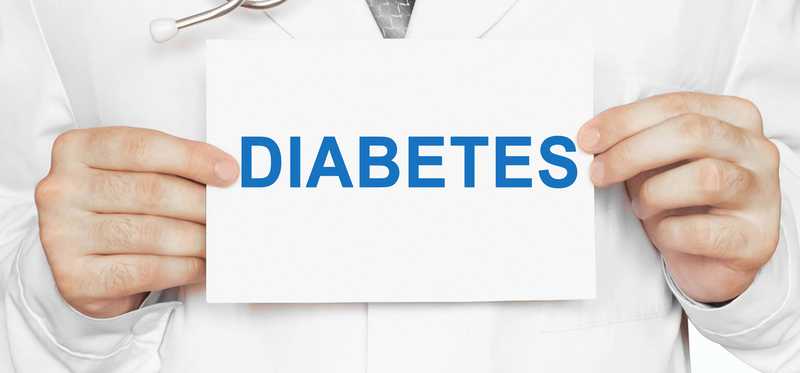The 25 Top-Performing S&P 500 Stocks of 2018

The 25 Top-Performing S&P 500 Stocks of 2018
The year held some clear winners
The returns of the S&P 500’s top performers may surprise you given the stock market’s dismal fourth-quarter performance. Although headwinds in the final months of 2018 were strong, all 25 of these stocks delivered impressive returns of roughly 30% or higher. Did you own any of 2018’s top-performing stocks?
ALSO READ: Was This the Best or Worst Retail Holiday Season in Years?
Previous
Next

No. 1: Advanced Micro Devices -- up 70%
About 67% of Americans play video games and many of them do that on devices powered by Advanced Micro Devices' (NYSE: AMD) high-speed graphic processing chips, accelerated processing units, and chipsets. The company’s shares rallied following news in July that competitor and market-share leader, Intel (NASDAQ: INTC), was delaying its next-generation 10 nanometer Cannon Lake processors until the second half of 2019. That timeline increases the odds Advanced Micro Devices can chip away at its larger rivals’ dominance in personal computers, but it's not all clear-sailing for the chipmaker. Nvidia (NASDAQ: NVDA) has launched its latest generation of graphics chips and if those chips decrease demand for Advanced Micro Devices graphics processors, Intel delivers its 10 nanometer chip sooner than anticipated, and demand for Advanced Micro’s chips for use in digital currency and blockchain applications slows, then Advanced Micro Devices may struggle to repeat its best-in-class performance in 2019.
Previous
Next

No. 2: Abiomed, Inc. -- up 68%
Previous
Next

No. 3: Fortinet Inc. -- up 61%
Data breaches and cyber crime are top threats to businesses worldwide and increasingly complex ecosystems spanning enterprise, cloud, and consumer applications are translating into growing demand for Fortinet‘s (NASDAQ: FTNT) cybersecurity solution, which features products and services that automatically protect, detect, and respond to cyber threats. Businesses buy Fortinet’s solution through third-party distributors or they deploy it in the cloud through popular providers, including Microsoft (NASDAQ: MSFT) Azure and Amazon (NASDAQ: AMZN) Web Services. Because Fortinet’s installed client base is growing, high-margin recurring services revenue accounts for over half of its revenue. Through the first nine months of 2018, its total sales were up 20% to $1.29 billion and its operating income grew 116% to $145.9 million. Since cyber threats aren’t tied to the economic cycle, Fortinet’s business could improve regardless of what’s next for the economy, making it a top technology stock to consider owning.
Previous
Next

No. 4: TripAdvisor -- up 57%
If you check out the popular ratings site, TripAdvisor (NYSE: TRIP), before you travel, you’re not alone. TripAdvisor is one of the most popular sites used by people who want to make the most of their business and personal trips. The company stumbled in 2017 as changes dented revenue from booking hotels, but investors cheered signs that business is stabilizing and management’s view that it could return to growth soon. That would be great because the hotel business’ struggles have taken away attention from soaring revenue associated with booking attractions, restaurants, and rentals. In Q3, those bookings increased 20% to $153 million. Increasing optimism for revenue growth and an improved marketing plan that’s boosting profitability makes TripAdvisor an intriguing stock to buy heading into 2019.
Previous
Next

No. 5: Advance Auto Parts -- up 55%
The average car on the road was just 7.6 years old in 1990. Today, it’s over 10 years old. Given Americans are driving a record 13,476 miles per year and cars are increasingly older, it’s not surprising that Advance Auto Parts (NYSE: AAP) sales are improving. The auto parts purveyor’s comparable store sales grew 4.6% -- the fastest rate almost eight years -- and its sales increased 4.3% to $2.3 billion in the third quarter. Like many companies this year, it also saw its earnings jump in 2018 because of low corporate tax rates due to tax reform. In Q3, its adjusted earnings per share improved 32% to $1.89. It will be hard for the company to deliver that kind of bottom-line growth once we anniversary tax reform next year, but the company could still deliver growth; particularly if its new do-it-yourself partnership with Walmart (NYSE: WMT) pans out.
Previous
Next

No. 6: Red Hat, Inc. -- up 46%
) for $34 billion in 2018. That’s a lot of money, but IBM’s betting Red Hat’s solutions for deploying and managing Linux networks will justify the hefty price it’s paying. It could be a good bet because Red Hat’s sales increased 22% year over year to $748 million and its adjusted earnings increased 20% year over year to $0.73 in the third quarter of 2017 alone. Red Hat inked 94 million-dollar deals in the third quarter, up 30% year over year, and 17 of them were worth over $5 million. If it can continue landing bigger and bigger deals, then Red Hat’s price tag could be justified.
Previous
Next

No. 7: Chipotle Mexican Grill -- up 43%
A series of stumbles at this fast-casual restaurateur has raised consumer concern over its food handling procedures, but Chipotle Mexican Grill (NYSE: CMG) appears to be getting back on track based on this year’s performance. The company hired former Taco Bell chief Brian Niccol as its CEO in early 2018 and so far, his efforts appear to be working. The company’s comparable store sales growth of 4.4% in the third quarter was the best showing since a norovirus outbreak drove consumers away in 2017. There’s still more work to be done, though. Most of the comp sales growth was due to price increases and average check increases, not foot traffic. Increasing the number of people who frequent it is key to this company’s full recovery, so investors will want to see if Chipotle’s digital ordering strategy and delivery strategy expands its customer base in 2019.
Previous
Next

No. 8: Keysight Technologies, Inc. -- up 43%
Mobile networks simply can’t deliver high-definition content quickly and smoothly enough to customers, but that could be changing soon because carriers are starting to roll out fifth-generation, or 5G, networks that are significantly faster than 4G networks. The shift to 5G is a boon for Keysight Technologies (NASDAQ: KEYS), a provider of testing solutions. In September, it rolled out a testing tool that manufacturers can use to make sure 5G base stations meet requirements. Solutions like that are critical to ensuring 5G roll-outs go off without a hitch and Keysight Technologies is already seeing its revenue increase because of 5G related demand. For example, its sales increased 16% to $1.1 billion in the quarter ending Sept. 30 and its full fiscal year sales ending September grew 20% to $3.9 billion.
Previous
Next

No. 9: O’Reilly Automotive, Inc. -- up 43%
Advance Auto Parts isn’t the only company that’s benefiting because Americans are driving their aging vehicles more miles. O’Reilly Automotive (NASDAQ: ORLY) also surged higher this year because of investor expectations well-worn vehicles will require increasingly more care. The company’s 5,200 stores provide parts for the do-it-yourself crowd but do-it-for-me repair shops account for 42% of its revenue. Growing revenue has made business so good this year that the company recently increased its buyback authorization by $1 billion, bringing the total value of its repurchase program to $11.75 billion. That buyback program will help boost its future earnings per share, helping to put a floor underneath any decline in the company’s share price in 2019.
ALSO READ: 3 Recession-Resilient Stocks That Have Crushed the Market in 2018
Previous
Next

No. 10: Twenty-First Century Fox -- up 40%
Disney’s (NYSE: DIS) acquisition of Twenty-First Century Fox (NASDAQ: FOX)(NASDAQ: FOXA) reinforced the thinking that content is king. Originally, Disney agreed to pay about $52 billion to acquire the movie and television Goliath in December 2017, however, the purchase price swelled to over $70 billion in 2018 as Disney fended off rivals interested in Twenty-First Century’s assets, including the X-Men franchise, Fox’s television creative units, movie production, and a stake in HULU. Once the deal closes, Disney will own 60% of HULU and a content catalog big enough to significantly drive interest in its direct-to-consumer entertainment services, reinforcing Disney’s industry dominance.
Previous
Next

No. 11: HCA Healthcare -- up 39%
A strong economy is boosting demand for profit-friendly elective hospital procedures and efforts to tamp down costs have paid off for HCA (NYSE: HCA) in 2018. The hospital operator reported admissions grew 3.4% year over year in the third quarter, up from a 2.8% increase in the second quarter, and operating expenses declined 1.7% to 81.8% of revenue in the past year. Growing admissions, a decline in operating expenses, and profit tailwinds associated with falling corporate income taxes allowed HCA to deliver $759 million in net income in the third quarter, up 78% from one year ago. HCA upped its full year guidance to 6.6% revenue growth and 55% earnings per share growth this year following those results, but we’ll have to wait and see what’s in store next year. If the economy sags and elective-surgery admissions slip, then the top line could suffer. Also, there’s still the risk healthcare reform could cause write-offs for care to the uninsured to increase, so investors will need to keep a close eye on if efforts to dismantle Obamacare gain traction.
Previous
Next

No. 12: Boston Scientific -- up 39%
Previous
Next

No. 13: McCormick & Co. Inc. -- up 37%
Previous
Next

No. 14: Illumina Inc. -- up 37%
for long term investors to own.
Previous
Next

No. 15: NRG Energy Inc. -- up 36%
Previous
Next

No. 16: Merck & Co. -- up 34%
The big biopharma’s success in 2018 is easily explained: Growing use of its multibillion-dollar oncology drug, Keytruda. A checkpoint inhibitor that block’s cancer's ability to hide from the immune system, Merck’s (NYSE: MRK) Keytruda is increasingly being used in non-small cell lung cancer and melanoma patients following trials demonstrating its efficacy and safety. Keytruda competes against other drugs that work similarly, yet Keytruda’s revenue increased about 100% year over year to over $5 billion through the first nine months of 2018. Merck’s sales increased 5% year over year to $31.3 billion and its earnings increased 30% to $1.63 per share year to date through Q3 because of Keytruda’s success. Industry watchers think Keytruda will eventually become the world’s second-best selling drug with annual sales of $12.7 billion by 2024, so there’s good reason why investors are bullish on this company’s future.
Previous
Next

No. 17: Eli Lilly & Co. -- up 34%
Worry generic competition for its top-selling drug, Cialis, would cause sales to slip weighed down Eli Lilly & Co.’s (NYSE: LLY) shares in 2017, however, shares began rallying sharply this summer after management reported better-than-expected results for newly launched drugs and a plan to spin-off its animal health business, Elanco. Through September, sales of Eli Lilly’s fast-growing type 2 diabetes medicine, Trulicity, increased 65% to $2.27 billion and despite only winning FDA approval in February, sales of its breast cancer drug, Verzenio, totaled $84.5 million in Q3, 2018. Additionally, Eli Lilly recently won FDA approval for a migraine drug, Emgality, which could add hundreds of millions in future sales. If sales for recently launched products continue growing, then Eli Lilly could deliver market-beating returns in 2019, particularly since Elanco’s IPO added billions to its balance sheet that it can use for acquisitions and drug R&D.
ALSO READ: 3 Big Pharma Stocks Hitting 52-Week Highs -- Are They Buys?
Previous
Next

No. 18: Netflix Inc. -- up 33%
2018’s fourth-quarter swoon took a toll on high-flying technology stocks, including entertainment-streaming dynamo Netflix (NASDAQ: NFLX), yet Netflix was still a top 25 S&P 500 performer because of a meteoric rise earlier in the year. The company continues to benefit from solid subscribership supported by big investments in original content and its capitalizing on international growth opportunities that can further expand sales and profit. In the third quarter, streaming revenue increased 36% year over year and its paid global membership surpassed 130 million, up 25% year over year. The average subscriber is paying 8% more this year than one year ago and thanks to increasing scale, operating margin improved 5% in the past year to 12%. It will get harder to deliver double-digit top-line growth as this business matures, but there’s still plenty of potential for profit expansion because of price increases and subscription upgrades
Previous
Next

No. 19: Edwards Lifesciences -- up 33%
Previous
Next

No. 20: Salesforce.com -- up 32%
ALSO READ: Salesforce Is Firing on All Cylinders
https://www.fool.com/investing/2018/11/28/salesforce-is-firing-on-all-cylinders.aspx?source=isesitlnk0000001&mrr=0.50
Previous
Next

No. 21: The AES Corporation -- up 32%
Previous
Next

No. 22: ResMed Inc. -- up 31%
Roughly 1 in 5 Americans have some type of sleep disorder that affects their breathing and as more people are diagnosed with these conditions, we're seeing increasing sales of ResMed’s (NYSE: RMD) continuous positive airway pressure (CPAP) devices. These CPAPs help prevent sleep apnea, a condition in which throat muscles relax and block a patient’s airway, by forcing air through the airway during sleep. ResMed estimates it’s only penetrated about 15% of its addressable market in the U.S. and even less so overseas, where diagnosing sleep apnea is less common. In the fiscal year ending June, its sales grew 13% to $2.3 billion and its GAAP net income grew 8% to $316 million. In October, it reported sales improved 12% from one year ago in fiscal Q1 2019, suggesting demand for its CPAP devices isn’t slowing.
Previous
Next

No. 23: Church & Dwight Co. -- up 31%
Slow-and-steady household products companies aren’t top of mind for most investors, but Church & Dwight’s (NYSE: CHD) performance in 2018 suggests investors shouldn’t ignore these stocks. Church & Dwight -- the company behind Arm & Hammer baking soda -- catapulted higher this year because of impressive organic growth. For instance, sales of legacy products, including baking soda, grew 4.7% year over year in the third quarter and as a result, the company’s total revenue grew 7.2% to $1.04 billion in the quarter. Church & Dwight’s adjusted earnings per share in Q3 grew nearly 19% to $0.58 too, but investors might want to temper optimism that this company’s profit will grow that strong in 2019 because a lot of the increase was due to a lower corporate tax rate because of tax reform. Nevertheless, management thinks sales and earnings per share will finish 2018 up 9% and 17% from last year, respectively, and that makes it one of the fastest-growing consumer goods companies investors can buy.
Previous
Next

No. 24: Lamb Weston Holdings -- up 31%
that was spun-out of Conagra Brands in 2016. In October, it reported fiscal second quarter revenue rose 12% year over year to $915 million because of prices and volume to restaurants, distributors, and retailers increasing 8% and 4%, respectively. The company’s selling more potato products with higher margins to its customers, so its gross margin rose 1.2% in the quarter from one year ago. That improvement, plus a drop in its tax rate, offset increased operating costs, allowing Lamb Weston to grow its earnings per share by 28% in the quarter from one year ago. Lamb Weston’s ability to reward investors with market-beating growth again in 2019 depends heavily on how demand shakes out at fast-food retailers, though. McDonald’s (NYSE: MCD) accounts for about 11% of its revenue, so investors will need to watch that fast-food company’s performance carefully. Also, limited time offerings, such as Taco Bells Nacho Fries, accounted for a lot of Lamb Weston’s improving financials in 2018, so investors should watch to see if similar products get sold next year.
ALSO READ: Why Conagra Brands Has Turned Into a Terrible Investment
Previous
Next

No. 25: Verisign -- up 29%
John Mackey, CEO of Whole Foods Market, an Amazon subsidiary, is a member of The Motley Fool’s board of directors. Teresa Kersten, an employee of LinkedIn, a Microsoft subsidiary, is a member of The Motley Fool’s board of directors. Todd Campbell owns shares of Amazon, Microsoft, Netflix, Nvidia, and Salesforce.com. The Motley Fool owns shares of and recommends Abiomed, Amazon, Berkshire Hathaway (B shares), Chipotle Mexican Grill, Illumina, Netflix, Nvidia, Salesforce.com, TripAdvisor, and Walt Disney. The Motley Fool owns shares of Microsoft. The Motley Fool recommends Fortinet, HCA Healthcare, McCormick, and ResMed. The Motley Fool has a disclosure policy.
Previous
Next
Invest Smarter with The Motley Fool
Join Over Half a Million Premium Members Receiving…
- New Stock Picks Each Month
- Detailed Analysis of Companies
- Model Portfolios
- Live Streaming During Market Hours
- And Much More
READ MORE
HOW THE MOTLEY FOOL CAN HELP YOU
-
Premium Investing Guidance
Market beating stocks from our award-winning service
-
The Daily Upside Newsletter
Investment news and high-quality insights delivered straight to your inbox
-
Get Started Investing
You can do it. Successful investing in just a few steps
-
Win at Retirement
Secrets and strategies for the post-work life you want.
-
Find a Broker
Find the right brokerage account for you.
-
Listen to our Podcasts
Hear our experts take on stocks, the market, and how to invest.
Premium Investing Services
Invest better with The Motley Fool. Get stock recommendations, portfolio guidance, and more from The Motley Fool's premium services.